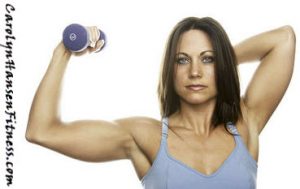Life Span vs. Health Span – You may have heard of these two terms and wonder what the difference is.
Living well and long: Are they the same? Can we do both?
Focus used to be solely on lifespan but new research about our concept of aging has changed. We now consider living a healthy life to be more important – it’s the concept of “health span.” Without a long “health span,” our “life span” really didn’t matter.
Unfortunately, even though modern medicine is now able to keep people alive much longer (life span), it still does not guarantee that they will remain well, truly healthy and thriving during that extended time (health span).
Best Case Scenario:
Ideally you want your health span (that functional, disease-free period where you have physical, mental and emotional health) to equal your life span.
The reality is, it’s not so much about years of life, but about life in years. Although we all want a bounty of years in life, living a longer life does not necessarily mean a better life. A long life with a high burden of chronic disease is not a good thing if it means more time is spent living with illness and disability, dependent on those around us.
While advancements in medicine and technology have resulted in increased overall lifespans, the achievement of extending our health span is lagging behind. Statistics show our health has steadily declined since World War II with over 50 percent of adults suffering one chronic illness or condition and many suffering multiple conditions.
For example, let’s look at that villain cancer, the second leading cause of death in our world.
Even though billions of dollars has been spent on research cancer is just as deadly now as it was 20, 30 or even 50 years ago.
The average person has a one-in-two chance of getting cancer and a one-in-three chance of dying from it and these figures are expected to soar as the number of overweight and obese people climbs to unprecedented level with three quarters of the population now in this category.
In fact, even with more drugs, more hospitals and more nursing homes available many people still suffer more than their parents experienced at a similar age.
To live with a life span that does not match ones health span is a very expensive and much less attractive option.
The experts agree the next chapter in medical advancement will need to be as much about “lifestyle as medicine” if along with those extra years of life, life to years is to be added. This is wonderful news as it means we do have a lot of control and can structure our lifestyle to ensure our health span does indeed match our life span.
A huge part of being healthy is about removing any risk that you will get these killers. To lower the likelihood of developing modern “lifestyle chronic diseases” like diabetes, heart disease and cancer along with many hundreds of others, this process, ideally, should start in childhood and last throughout adulthood.
So, what can you do to increase your health span?
It is now becoming evident that adherence to healthy lifestyle choices like proper exercise, healthy eating (REAL food) and other healthy lifestyle elements like stress management, quality sleep and healthy doses of sunlight is necessary to obtain a comparable increase in “health span.”
Lean body mass which is the amount of lean muscle tissue you have is vitally important to retain health span. Unfortunately, we start losing our precious muscle tissue in our 30s. If we do nothing about it, sarcopenia – the serious loss of muscle mass and strength – eventually sets in. As muscle mass ages it not only dwindles in strength and size it also triggers an overall decline in metabolic function.
 Our lean body mass is the MOST important bio-marker because it hugely influences many other bio-markers such as basil metabolic rate, overall body strength, bone density and brain health.
Our lean body mass is the MOST important bio-marker because it hugely influences many other bio-markers such as basil metabolic rate, overall body strength, bone density and brain health.
Most of us fail to understand our muscles go far beyond our mobility. Their health also protects against metabolic and hormonal decline, insulin resistance, obesity, increased risk of fractures and when neglected can severely limit one’s health span.
Having toned, strong muscles helps maintain optimum blood sugar, boosts heart and immune system health, keeps bones and joints healthy, and enhances cognitive function along with slowing the aging process.
Given the metabolic and biological importance of healthy muscle mass, allowing degradation of this system through inactivity particularly as we get older opens the door to significant health crisis.
In short, once muscle tissue loss sets in, health is on a slippery downhill slope, triggering unhealthy body composition (muscle/fat ratio) changes, loss of physical energy and vitality, increased tendency to gain excess weight, increased vulnerability to disease and accelerating the aging process.
Not to mention the loss of independence when so much strength is lost we become too frail to take care of ourselves and move around unassisted which many of us have seen with our parents and grandparents.
Increasing our lean muscle mass helps slow the aging process, improve our functionality, and enhance our quality of life. Partaking in strengthening exercise (not cardio-type activity) – defined as slow, direct controlled loading of the muscles through their ranges of movement under with adequate resistance can rebuild lost strength or maintain it.
The sad truth is, there is simply not enough natural “work” for our muscles to remain strong in our modern increasingly sedentary world. We literally sit for most to the day and most people simply do not get enough muscle building and maintaining activity.
The only way we can make sure we do get enough of the right activity is to add intentional strengthening exercise into our lives and never stop doing it no matter how old we are or we get.
Every healthy choice you make or don’t make has a direct impact on your health now, and in the future. Decide today to become passionate about it and make a commitment towards increasing your own health span for a long AND healthy life.
From the top of your head to the bottom of your toes, being physically active is the stimulus that gets the human body working its best while preventing it from deteriorating and strength training is the key player.
If you fail to challenge your muscles to stay strong they will continue to weaken and fail.
Everything you need to know to slow down and even reverse the aging clock can be found in my anti-aging library of help: “Reclaim Your Longevity.”
For more tools and resources from Carolyn Hansen to assist you in attaining your health and fitness goals and achieving the success you desire in life, please visit:

Speak Your Mind